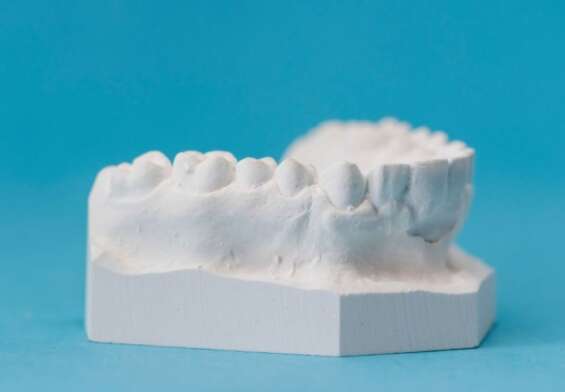
The Life-Saving Guide: When to Use a Tourniquet
When faced with a severe bleeding emergency, knowing how to use a tourniquet can make the difference between life and death. However, it is crucial to understand that tourniquets, such as those offered by Sam Medical products, should only be used in specific situations.
When is the right time? Read on to find out.
When Bleeding is Too Severe
One of the crucial steps in determining whether to use a tourniquet is to assess the severity of the bleeding. Bleeding can range from minor oozing to severe, life-threatening hemorrhage.
You can make an informed decision about the appropriate intervention by evaluating the extent of the bleeding.
Begin by observing the rate and volume of blood loss. Minor bleeding that can be controlled with direct pressure and elevation may not require a tourniquet. If the bleeding is intermittent, slows down, and shows signs of improvement with basic first aid measures, it is likely not severe enough to warrant a tourniquet.
On the other hand, severe bleeding is characterized by a continuous flow of blood that does not subside with direct pressure. This type of bleeding is often bright red in color and may be pulsatile, indicating arterial involvement.
If the blood loss is significant, with the injured person exhibiting signs of shock such as rapid breathing, pale skin, or altered mental status, the situation may call for immediate tourniquet application.
When Direct Pressure Fails
Direct pressure is often the first-line approach for controlling bleeding. It involves applying firm pressure directly on the wound with a clean cloth or your gloved hand.
While direct pressure is effective in many cases, there are situations where it may fail to stop the bleeding, indicating the need for a tourniquet.
If, despite applying firm and continuous pressure for several minutes, the bleeding continues unabated, direct pressure has likely failed. This could be due to the severity of the injury, the involvement of major blood vessels, or the inability to apply sufficient pressure due to the location or nature of the wound. In such instances, it is crucial to recognize the limitations of direct pressure and consider the prompt application of a tourniquet.
When There’s Uncontrolled Hemorrhage in Extremities
Tourniquets are most commonly used in cases of uncontrolled hemorrhage in the extremities, such as severe lacerations, amputations, or gunshot wounds. Bleeding from major arteries in the arms or legs can be rapid and profuse, leading to significant blood loss and potentially life-threatening situations.
When confronted with uncontrolled hemorrhage in an extremity, it is essential to act swiftly and decisively. The application of a tourniquet can help control the bleeding by compressing the blood vessels and preventing further blood loss. A properly applied tourniquet can buy valuable time until professional medical assistance arrives by effectively occluding the arterial blood flow.
It is important to note that tourniquets should only be used in situations where other methods of bleeding control have failed or are impractical. Uncontrolled hemorrhage in extremities, characterized by severe and continuous bleeding that cannot be managed with direct pressure, warrants the consideration of a tourniquet as an intervention to save the person’s life.
When Professional Medical Assistance is Delayed
In certain circumstances, professional medical assistance may be delayed or inaccessible, making the use of a tourniquet a critical intervention. This can occur in remote areas, during natural disasters, or in situations where emergency medical services are overwhelmed or unavailable.
When faced with the reality of delayed professional help, applying a tourniquet can provide temporary bleeding control and potentially save a life.
The decision to use a tourniquet when medical assistance is delayed requires careful judgment. Evaluate the severity of the bleeding, the potential for further blood loss, and the estimated time until professional help arrives.
If the bleeding is severe and immediate medical assistance is not feasible, a tourniquet can be a life-saving measure to prevent the injured person from exsanguinating while awaiting definitive medical care.
When There’s Clear Communication and Coordination
Using a tourniquet is not a standalone intervention but rather part of a comprehensive approach to managing severe bleeding. Communication and coordination with emergency medical responders are essential components of this process.
Once a tourniquet has been applied, it is crucial to notify the professionals about its presence, location, and time of application.
Clear communication helps ensure that the injured person receives the appropriate care upon arrival of medical personnel. It allows the medical team to anticipate and prepare for the use of a tourniquet, providing them with vital information to continue the necessary medical interventions seamlessly.
Additionally, proper documentation of the tourniquet application and communication with healthcare providers is crucial for the injured person’s ongoing care. When professional medical assistance becomes available, it is important to provide an accurate account of the tourniquet’s usage, including the time of application, any adjustments made, and the effects observed.
This information aids in the subsequent management of the person’s injuries and helps guide their treatment plan.
Coordination between the person providing immediate care, emergency medical services, and subsequent healthcare providers ensures a smooth transition of care and optimizes the injured person’s outcomes. By effectively communicating and coordinating with medical professionals, you contribute to a well-informed and efficient response to the bleeding emergency.
Conclusion
Understanding the appropriate use of a tourniquet can be a life-saving skill in emergencies involving severe bleeding.
The decision to apply a tourniquet should never be taken lightly. It is not a universal solution but a specialized tool to be used when all other methods have failed or when immediate professional medical help is unavailable.
By carefully evaluating the situation, you can determine if the severity of the bleeding warrants the use of a tourniquet, and if so, ensure its proper application and monitoring.
However, it is essential to stay vigilant and update your knowledge and skills regularly. The field of emergency medicine is constantly evolving, and new research may refine our understanding of when to use a tourniquet.
Keeping up with advancements in bleeding control techniques, attending first aid training courses, and staying informed about current guidelines can help ensure that you are prepared to make informed decisions in critical situations.







![Car Accident Injuries That Require Surgery [EXPLAINED] Don't Take a Chance on Car Accident Injuries - Get the Surgery You Need!](https://fitgag.com/wp-content/uploads/2023/01/Dont-Take-a-Chance-on-Car-Accident-Injuries-Get-the-Surgery-You-Need-565x392.jpg)



